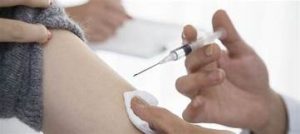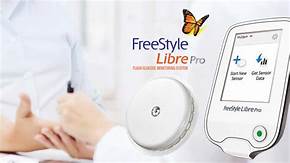Study Finds Dramatic Drop in Ketoacidosis Rate after FreeStyle Libre System Initiation in People with Type 1 and Type 2 Diabetes
CHICAGO, June 13, 2020 /PRNewswire/ — People using Abbott’s FreeStyle Libre, a sensor-based glucose monitoring system, experienced a considerable decrease in ketoacidosis-related hospitalizations—52% for type 1 diabetes and 47% for type 2 diabetes—according to the study titled “Dramatic Drop in Ketoacidosis Rate after FreeStyle Libre System Initiation in Type 1 and Type 2 Diabetes in France, Especially in People with Low Self-Monitoring of Blood Glucose (SMBG): A Nationwide Study,” presented today at the American Diabetes Association’s® (ADA’s) 80th Virtual Scientific Sessions.
The trial, known as the “RELIEF” study, is the largest study to date on the impact of the FreeStyle Libre system on rates of hospitalization for diabetic ketoacidosis (DKA), a life-threatening condition that is generally preventable through close glucose monitoring.
Researchers retrospectively analyzed DKA rates using ICD-10 codes (E10.1, E11.1), on the French national claims database, among 33,203 people with type 1 diabetes (T1D) and 40,955 people with type 2 diabetes (T2D) who used the FreeStyle Libre system between August 1, 2017 and December 31, 2017. DKA rates were recorded in the year prior to the first FreeStyle Libre sensor claim and in the year after.
The data analysis revealed:
- Overall, yearly DKA rates were reduced after FreeStyle Libre system initiation by 52% for patients with T1D and 47% for patients with T2D.
- Results were most marked in the sub-population of patients who did not use self-monitoring blood glucose testing (SMBG) in the year prior to FreeStyle Libre system use (60% reduction for patients with T1D and 51% reduction for patients with T2D).
- People with the most regular use of SMBG testing (more than five blood glucose test strips reimbursed per day) also experienced marked reductions in hospitalizations (59% for T1D and 52% for T2D).
- A reduction in hospitalization rates for DKA was observed among patients treated with multiple daily injections, as well as patients who used continuous insulin infusion.
“This was a dramatic reduction in ketoacidosis-related hospitalization rates among patients with both type 1 and type 2 diabetes—especially among people who previously had very low self-monitoring of blood glucose—and supports the use of intermittently scanned continuous glucose monitoring systems like the FreeStyle Libre for individuals who are at risk for diabetes related complications such as diabetic ketoacidosis,” said lead study author Ronan Roussel, MD, PhD, chief of the endocrinology, diabetes, and nutrition department at Hôpital Bichat, Fédération de Diabétologie, AP-HP, Paris, France. “It is plausible that the use of the FreeStyle Libre system allowed people to detect and limit persistent hyperglycemia, and subsequently prevent ketoacidosis. Although preventing ketoacidosis has traditionally relied on intensive self-monitoring of blood glucose, there is growing literature that shows this has not helped reduce the overall incidence of diabetic ketoacidosis. The positive results of this study demonstrate that intermittently scanned continuous glucose monitoring may have significant implications for patient-centered clinical care and, given the increased burden of ketoacidosis on healthcare utilization and expenditure, it may have a positive impact on long-term economic health outcomes.”
Research presentation details:
- Dr. Roussel presented the research during the following session.
- Session: Glucose Monitoring and Sensing
- Date: Saturday, June 13, 8:00 – 10:00 a.m. CT (all sessions will be recorded and available for viewing for up to 90 days)
- Abstract: 68-OR
For more information or to schedule an interview with Dr. Roussel, please contact Daisy Diaz by phone at (703) 253-4807 or by email at [email protected].




Recent Comments